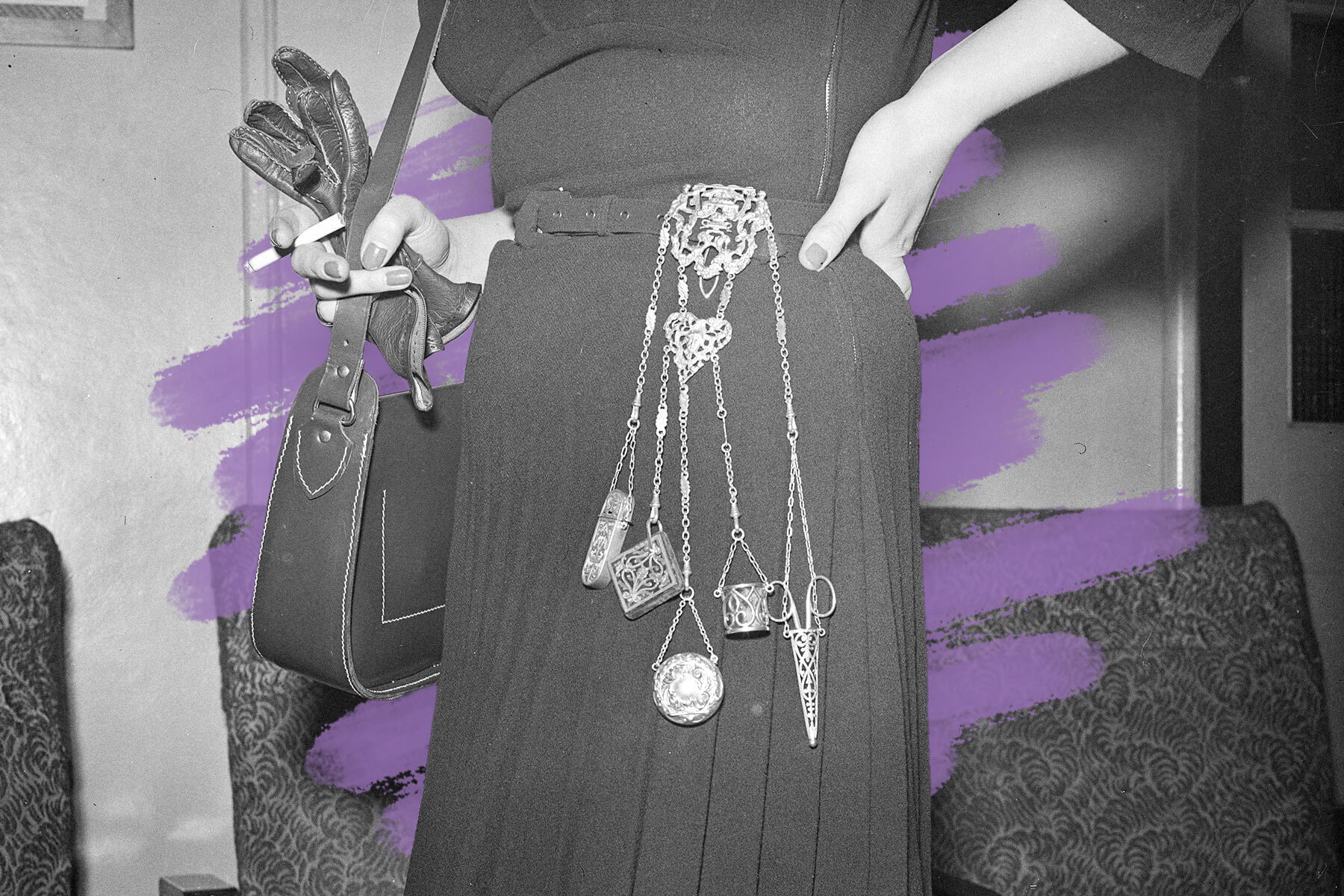Before pockets, people wore elaborate “chatelaines” to carry their keys.
Long before pockets became commonplace, humans had other resourceful ways to carry everyday essentials. Wearable pouches such as belt bags date back more than 5,000 years, and as early as ancient Roman times, people wore brooches that had hooks for hanging personal grooming tools. Similar items were used for carrying keys throughout the medieval period and beyond; by the 18th century, the tool had evolved into an elaborate piece that came to be known as a “chatelaine,” a word derived from French, referring to the keeper of a castle.
Chatelaines from this era typically consisted of an ornately designed metal clip or hook that was fastened over a waistband or belt. Several chains — upwards of 12 or 13 on large chatelaines — extended from the clip, and each one held a small but useful item for the day-to-day operations of a household. This included keys, of course, but also scissors, writing tools, sewing kits, or even perfume. There were specialized versions for nurses or artists to help them keep their tools at hand, as well as chatelaines that primarily served as fancy fashion accessories — these were usually made of gold, beautifully decorated with diamonds and enamels, and often held a fan, watch, or purse.
While both women and men wore versions of chatelaines throughout history, it was mostly women who wore them during this era — men’s clothing, after all, had reliably included pockets since the 17th century. By the early 20th century, however, women’s handbags had become more common and larger; people also began wearing watches on their wrists as opposed to a chain. After World War I, dropped-waist fashion silhouettes took center stage, and chatelaines were left behind as but a relic of functional fashion.







